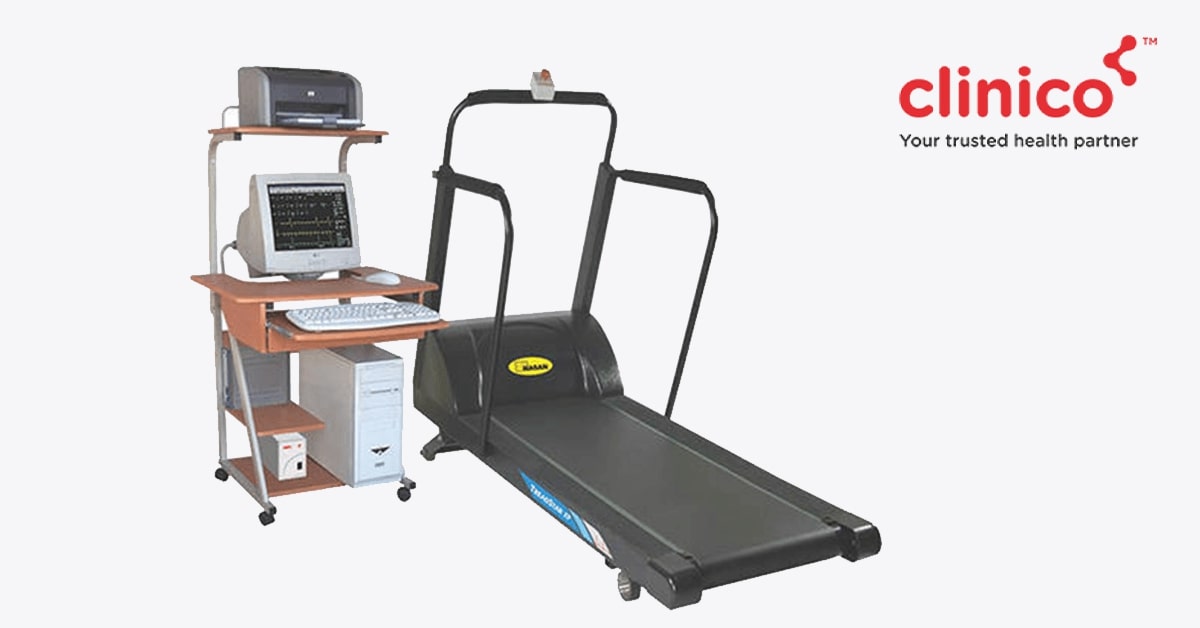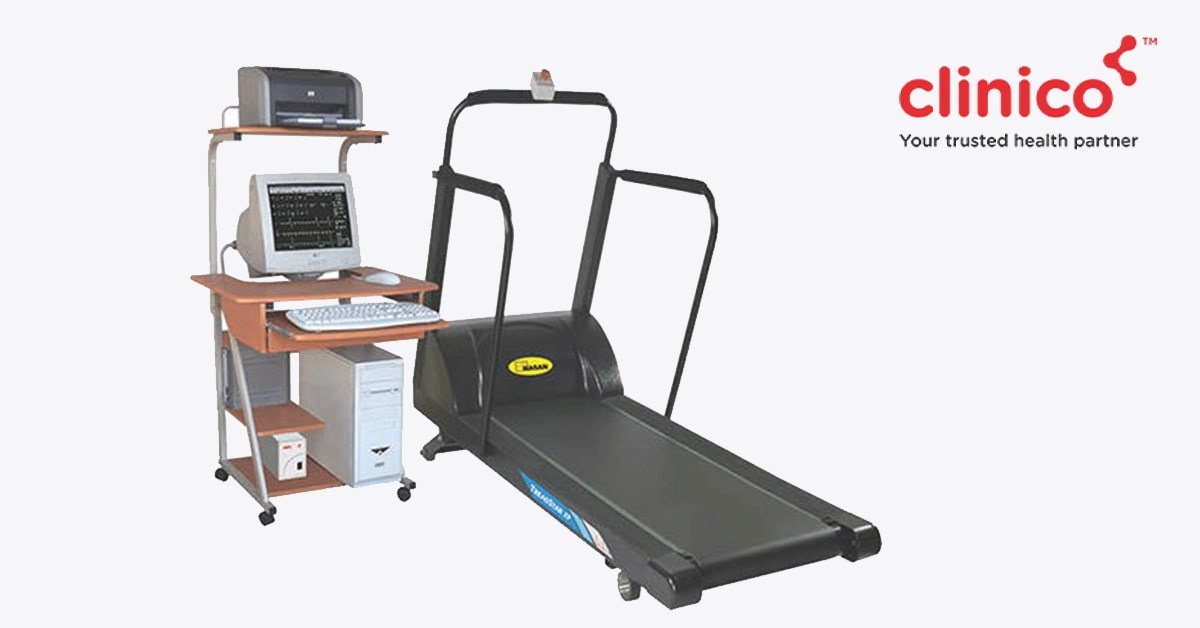
What is a Stress test?
Also known as exercise Stress test, the Stress test helps doctors inspect your heart’s working during physical activity. As exercise causes the heart to pump more vigorously and rapidly, the Stress test helps identify issues related to blood flow in the heart.
The test generally comprises walking on a treadmill or riding a stationary bike. The difficulty level is gradually increased and your breathing, heart rhythm & blood pressure are monitored.
Why is the Stress test done?
A doctor generally advises the Stress test if you have signs/symptoms of coronary artery disease or an abnormal heart rhythm, also called arrhythmia.
A Stress test is used to:
- Help in creating a treatment plan for heart issues
- Diagnose the chronic nature of an existing heart condition
- Monitor the effects of an ongoing heart treatment
A doctor may suggest a Stress test to:
- Diagnose coronary artery disease
- Diagnose heart rhythm issues (arrhythmias)
- Help guide treatment of heart problems
- Inspect your heart prior to surgery
What are the types of Stress tests?
There are three kinds of Stress tests. This include:
- Exercise Stress test: The most common type of Stress test that is usually conducted in the majority of the cases, the exercise Stress test involves walking on a treadmill while an electrocardiogram (ECG) machine monitors your heart.
- Nuclear Stress test: This test is identical to the exercise Stress test, with the only difference being that you will receive a dye through an intravenous line (IV) inserted in your arm. This will enable the medical professional to examine images of your heart with the help of a special camera.
- Stress echocardiogram: Another type that is identical to the exercise Stress test, with the distinction being a transducer held against your chest during the test. The transducer will facilitate the viewing of moving pictures of your heart.
Stress test Preparation
Before a Stress test, the doctor will enquire about your medical history and the amount & intensity of exercise you do on a regular basis.
This will help the doctor decide the extent and intensity of exercise that will be suitable for you during the test. Prior to the start of the test, the doctor or nurse will inspect your heart rate, breathing & strength of lungs.
Conclusion
The Stress test is a vital tool for diagnosing heart-related problems and monitoring cardiovascular health. It plays a significant role globally in the diagnosis and treatment of heart issues.
If you have been advised by your doctor to undergo a Stress test, then feel free to get in touch with us at Clinico!
Our team is committed towards a common goal of achieving total patient care and confidence by delivering excellent diagnostic reports and clinical services.
Call us 24×7 at 9504555555 for booking your appointment!
FAQ’s
The nuclear stress test is the type of stress test that is the most precise. It has a sensitivity of approximately 81%, implying that it will miss only around 19% of high-grade heart blockages.
No. An echo is a diagnostic test that helps evaluate the heart’s structures & functioning, whereas a stress test assists in assessing the heart’s functioning when put under stress via exercise or medications.
Yes, the echo stress test is particularly beneficial when detecting the presence of blockages in the coronary arteries of the heart.
“Goldschlager, N. O. R. A., ARTHUR SELZER, and Keith Cohn. “”Treadmill stress tests as indicators of presence and severity of coronary artery disease.”” Annals of Internal Medicine 85.3 (1976): 277-286.
https://www.acpjournals.org/doi/abs/10.7326/0003-4819-85-3-277
Jelinek, Michael V., and Bernard Lown. “”Exercise stress testing for exposure of cardiac arrhythmia.”” Progress in Cardiovascular Diseases 16.5 (1974): 497-522.
https://www.sciencedirect.com/science/article/pii/0033062074900085
“”Fortuin, Nicholas J., and James L. Weiss. “”””Exercise stress testing.”””” Circulation 56.5 (1977): 699-712.
https://www.ahajournals.org/doi/pdf/10.1161/01.CIR.56.5.699
Marwick, Thomas H. “”Stress echocardiography.”” Echocardiography (2018): 491-519.
https://link.springer.com/chapter/10.1007/978-3-319-71617-6_21
“


